9 Types of Anxiolytics: Anxiety Medication


Written and verified by the psychologist Gema Sánchez Cuevas
We know that taking a pill does not solve psychological pain (though it may give temporary relief). We know that anxiolytics do not cure anxiety or make your energy-sucking boss disappear.
However, they do help. They help with emotional distress and enhance the effectiveness of psychotherapy and a multidisciplinary approach.
Sociologists say we are living in a dystopian society. Our world buys millions of books on how to be happy every year. Our world filters our photos to create an image of perfection. Of perfect smiles, ideal happiness.
Because being happy sells. We all aspire to it too but then we look into our own lives, the skeletons in our closet, where our fears gnaw at us and the shadow of anxieties traps us.
“We treat grief and fear with pills as if they were diseases. But they are not”.
-Guillermo Rendueles, psychiatrist-
The pharmaceutical industry tries to create increasingly sophisticated psychiatric drugs with fewer side effects and faster action. In fact, now there are several types of medication for every pain in life.
General practitioners prescribe them too easily sometimes, creating dependencies in people who might have solved their problems promptly with a non-pharmacological strategy.
However, that’s the problem. Some pathologies originate internally and require a chemical approach, and some depression of a reactive nature caused by stress would undoubtedly require more than one therapeutic strategy.
In any case, anxiolytics are essential for many people, without a doubt, but always only for a certain amount of time. Otherwise, we risk falling into a downward medical spiral. And the side effects are sometimes more harmful than the problem itself.
Today we’ll explore the types of anxiolytics on the market. They aim to treat processes associated with anxiety, insomnia, panic disorders, etc.
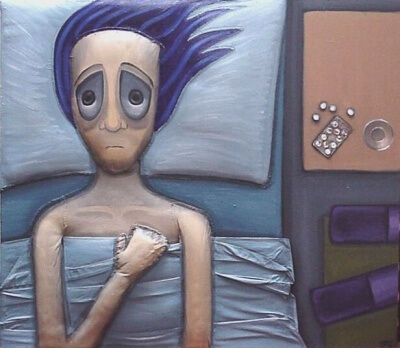
The main types of anxiolytics
People who have needed or currently need pharmacological treatment to reduce anxiety know that it’s normal to try more than one type, change the dose from time to time, and follow up on how we feel, what we’re doing, and the possible side effects that they’re causing.
- Each individual responds differently to different anxiolytics. Therefore it is advisable to have the supervision of professionals to guide us in this process.
- Anxiolytics, sedatives and hypnotics are medications that work in the central nervous system to relieve anxiety or help us fall asleep.
Likewise, it is also a good idea to remember what the action mechanism of anxiolytics is:
- They are sedatives. Meaning, they slow down the functions of the body.
- They are psychotropic drugs that act on the central nervous system. That is, they not only help us relax but many of them also have sedative, anti-seizure and amnestic effects.
- Its action mechanism is usually simple. They increase the effect of a brain chemical called GABA (gamma-aminobutyric acid). GABA is a type of brain inhibitor that relaxes and reduces the activity of neurons.
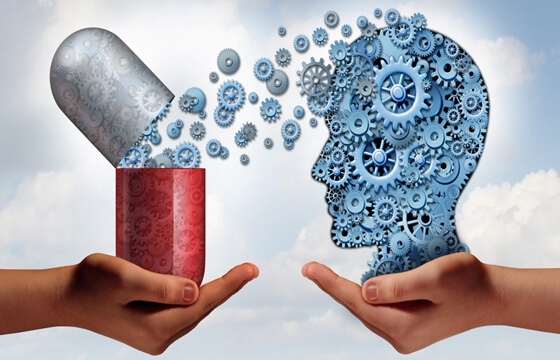
Now let’s look in detail at the main types of anxiolytics.
1. Benzodiazepines
Benzodiazepines make up the most common “family” of anxiolytics currently used. In addition to acting on the substance GABA, it also acts on the limbic system, inhibiting the activity of serotonin in the brain.
- The most common drugs of this class are diazepam, lorazepam, bromazepam, alprazolam and clorazepate, which we will now describe.
- Most of them produce relaxation, relief from cognitive tension and different sedative effects depending on the type of drug.
Also, depending on its duration and the effect on our body, we can make the following classification:
Short-lived anxiolytics (their effects can last up to 8 hours):
- Bentazepam.
- Clotiazepam.
- Cloxazolam.
Anxiolytics with an intermediate half-life (their effects last from 8 to 24 hours):
- Alprazolam.
- Bromazepam.
- Camazepam.
- Clobazam.
- Ketazolam.
- Lorazepam.
- Oxazepam.
- Oxazolam.
- Pinazepam.
Anxiolytics with a long half-life (their effects last more than 24 hours):
- Clorazepate dipotassium.
- Chlordiazepoxide.
- Chlordiazepoxide + Vitamin B-6.
- Diazepam.
- Halazepam.
- Medazepam.
- Prazepam.
It should be noted that the side effects associated with benzodiazepines are not as serious as those that the first type of anxiolytics once caused, namely, barbiturates.
In addition, we must remember that the administration and consumption of these psychiatric drugs should never exceed 4 to 6 weeks. Otherwise, we may develop a dependency.
The most common secondary symptoms associated with benzodiazepines are the following:
- Drowsiness.
- Dizziness.
- Confusion.
- Loss of balance (especially in the elderly).
- Speech disorders.
- Muscular weakness.
- Constipation.
- Dry mouth.
- Blurry vision.
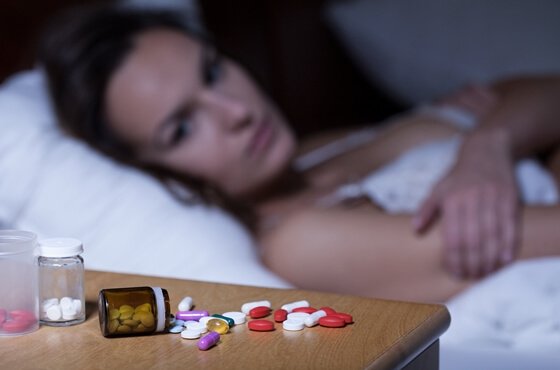
2. Barbituates
Like we just said: before benzodiazepines were on the market, barbiturates were the only anxiolytic available for treating anxiety.
Since Nobel Prize winner in chemistry Emil Fischer discovered barbital in 1902, they arose as a dangerous but effective resource, capable of acting as immediate sedatives of the central nervous system.
Later, in 1963 the company “Roche” released the well-known Valium. With this drug came the era of benzodiazepines. Just a year before — curiously — Marilyn Monroe “apparently” committed suicide with a high dose of barbiturates.
But why did they stop being prescribed for the treatment of anxiety?
- Barbiturates and all drugs containing barbituric acid result in high psychological and physical dependence.
- Also, the line between what is considered a normal dose and a toxic dose is very fine.
- Its action mechanism is based on preventing the flow of sodium to neurons. Currently, its use is reserved only for certain surgeries and seizures.
These are the most common types of barbituates:
- Amobarbital (Amytal).
- Aprobarbital (Alurate).
- Butobarbital (Butisol).
- Pentoarbital (Nembutal).
- Secobarbital (Seconal).
3. Buspirone
Buspirone has its pros and cons. However, it is still a very interesting type of anxiolytic. Its main advantage is that it has few side effects, does not interact with other substances, does not affect cognitive performance, and does not cause sedation.
- That’s why it is well-established in the pharmaceutical market. Doctors like it because of its few side effects.
- However, the negative aspect of buspirone is that it is slow-acting. In fact, the patient begins to notice its effects only after 15 days. Of course, this can be a problem, because a person with severe anxiety wants to feel better as soon as possible, and above all, to be able to sleep.
However, experts tell us that it is very effective for anxiety that is not very intense, and highly recommended for older people.
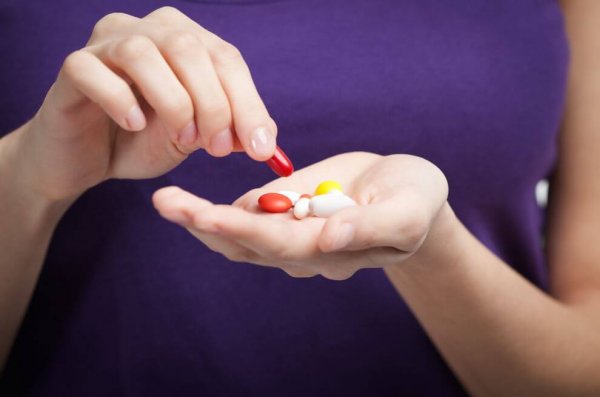
4. Alprazolam
Alprazolam is one of the most prescribed anxiolytics. Many know it as Trankimazin. It is a derivative of benzodiazepines and is used primarily for the treatment of panic attacks, agoraphobia, and intense stress.
Also, its chemical properties closely resemble tricyclic antidepressants.
- It should be noted that it is a high-potency drug that acts immediately, unlike buspirone. It has sedative, hypnotic and anti-seizure properties, but the most noticeable effect is the anxiolytic.
- On the other hand, it’s important to know that Alprazolam can be very addictive. Therefore, to avoid tolerance, it should be used for a limited amount of time.
5. Diazepam
Diazepam or Valium is undoubtedly another of the most well-known anxiolytics. It is also a derivative of benzodiazepines and the one that is most used in outpatient and medical centers.
- It is the most effective drug for treating muscle spasms. So in addition to treating anxiety, it also treats psychosomatic disorders, stiff neck, delirium tremens, panic attacks, dyspnea… and it’s even used for sedation before surgery.
- Likewise, it should be noted again that this anxiolytic also causes serious dependence when high doses are used for prolonged periods.
“Regular use of anxiolytics creates long-term addiction, rather than treating the problem or disease”
6. Lorazepam
Most of us have heard of Lorazepam or “orfidal”. It is very powerful and is used for different purposes:
- Anxiety disorders.
- Sleep disorders, insomnia.
- Tension and stress.
- Some psychosomatic and organic diseases.
- Irritable bowel syndrome.
- Epilepsy.
- It is also used to treat nausea and vomiting caused by chemotherapy or alcohol withdrawal.

Interestingly, lorazepam has an immediate effect, reaching its maximum bioavailability peak at 2 hours. Also, its side effects are not excessively serious.
Even though it is not very addictive, it is recommended that its use be limited in time.
7. Bromazepam
Bromazepam, better known as Lexatin, is used in low doses to treat anxiety and phobic neurosis. If it is administered in higher doses, it acts as an effective muscle relaxant, sedative and hypnotic.
It should be noted that bromazepam is a dangerous drug: it quickly causes dependencies and interacts with various substances.
If it is combined with alcohol it can be fatal. Therefore, the patient should follow a doctor’s instructions exactly for it to work well and be safe.
8. Clorazepate
Clorazepate is a psychiatric drug with multiple uses:
- Anxiety.
- Neurosis.
- Psychosis.
- Insomnia.
- It is very effective in treating alcohol and drug withdrawal.
- It is also used to treat irritable bowel syndrome.
Clorazepate can be taken for 3-4 months. Beyond this period, it generates dependence and may not work as well.
9. Antihistamines
It may surprise you that antihistamines are on this list. Aren’t they usually used to treat allergies?
Well, it is important to note that there are different types of antihistamines. In general, most antihistamines block histamine.
However, one type is Hydroxyzine, which, in addition to relieving the itching caused by allergic skin reactions, reduces brain activity and relieves anxiety and tension.
However, antihistamines are not the most suitable drugs for treating anxiety. In fact, psychiatrists do not recommend them if the patient suffers from panic attacks.
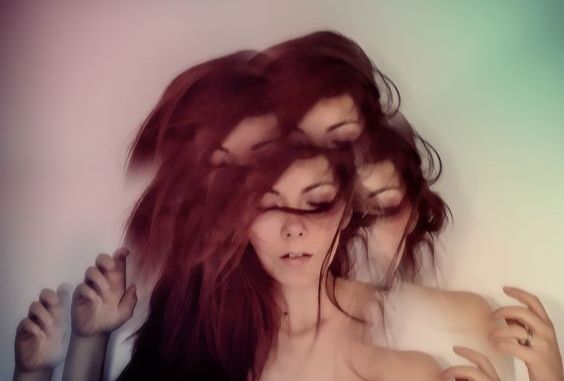
Anxiolytics: helpful but be careful
To conclude, many more names and alternatives could be added to this list. One is beta-adrenergic blocking drugs, which also include natural alternatives with few side effects.
However, the ones we have described here are the most common. They’re the ones doctors prescribe the most, the ones on many people’s nightstands.
Remember that anxiolytics do not cure anxiety. They do not make panic attacks, neuroses or darkness disappear.
While these drugs treat, relieve, and offer us rest (good and necessary things), they don’t solve the root problem. An exception is if it’s a disease with an interior origin, like some depressions.
Therefore, we can use anxiolytics for a limited amount of time but always combine with psychotherapy. Because while “we are what we eat” may be true, “we are what we think” too.
Let’s change our approach and not obsessively medicate things that are sometimes not pathological.
References:
Andrés-Trelles, F. (1993) Fármacos utilizados en la ansiedad: benzodiacepinas y otros ansiolíticos. Madrid: MacGraw Hill Interamericana.
Hardman J. G., Goodman L. S., Gilman A. (1996) Las bases farmacológicas de la terapéutica. Vol. I. Págs. 385-398. Madrid: MacGraw-Hill Interamericana.
Robert Whitaker, (2015) Anatomía de una epidemia, Madrid: Capitán Swing
Sophie Billioti, Yola Moride, Thierry Ducruet (9-09-2014) Benzodiazepine use and risk of Alzheimer’s disease: case-control study. British Medical Journal, 349, págs 205-206
Eugene Rubin, Charles Zorumski, (2015) How Many People Take Benzodiazepines? Psichology Today https://www.psychologytoday.com/blog/demystifying-psychiatry/201505/how-many-people-take-benzodiazepines
We know that taking a pill does not solve psychological pain (though it may give temporary relief). We know that anxiolytics do not cure anxiety or make your energy-sucking boss disappear.
However, they do help. They help with emotional distress and enhance the effectiveness of psychotherapy and a multidisciplinary approach.
Sociologists say we are living in a dystopian society. Our world buys millions of books on how to be happy every year. Our world filters our photos to create an image of perfection. Of perfect smiles, ideal happiness.
Because being happy sells. We all aspire to it too but then we look into our own lives, the skeletons in our closet, where our fears gnaw at us and the shadow of anxieties traps us.
“We treat grief and fear with pills as if they were diseases. But they are not”.
-Guillermo Rendueles, psychiatrist-
The pharmaceutical industry tries to create increasingly sophisticated psychiatric drugs with fewer side effects and faster action. In fact, now there are several types of medication for every pain in life.
General practitioners prescribe them too easily sometimes, creating dependencies in people who might have solved their problems promptly with a non-pharmacological strategy.
However, that’s the problem. Some pathologies originate internally and require a chemical approach, and some depression of a reactive nature caused by stress would undoubtedly require more than one therapeutic strategy.
In any case, anxiolytics are essential for many people, without a doubt, but always only for a certain amount of time. Otherwise, we risk falling into a downward medical spiral. And the side effects are sometimes more harmful than the problem itself.
Today we’ll explore the types of anxiolytics on the market. They aim to treat processes associated with anxiety, insomnia, panic disorders, etc.

The main types of anxiolytics
People who have needed or currently need pharmacological treatment to reduce anxiety know that it’s normal to try more than one type, change the dose from time to time, and follow up on how we feel, what we’re doing, and the possible side effects that they’re causing.
- Each individual responds differently to different anxiolytics. Therefore it is advisable to have the supervision of professionals to guide us in this process.
- Anxiolytics, sedatives and hypnotics are medications that work in the central nervous system to relieve anxiety or help us fall asleep.
Likewise, it is also a good idea to remember what the action mechanism of anxiolytics is:
- They are sedatives. Meaning, they slow down the functions of the body.
- They are psychotropic drugs that act on the central nervous system. That is, they not only help us relax but many of them also have sedative, anti-seizure and amnestic effects.
- Its action mechanism is usually simple. They increase the effect of a brain chemical called GABA (gamma-aminobutyric acid). GABA is a type of brain inhibitor that relaxes and reduces the activity of neurons.

Now let’s look in detail at the main types of anxiolytics.
1. Benzodiazepines
Benzodiazepines make up the most common “family” of anxiolytics currently used. In addition to acting on the substance GABA, it also acts on the limbic system, inhibiting the activity of serotonin in the brain.
- The most common drugs of this class are diazepam, lorazepam, bromazepam, alprazolam and clorazepate, which we will now describe.
- Most of them produce relaxation, relief from cognitive tension and different sedative effects depending on the type of drug.
Also, depending on its duration and the effect on our body, we can make the following classification:
Short-lived anxiolytics (their effects can last up to 8 hours):
- Bentazepam.
- Clotiazepam.
- Cloxazolam.
Anxiolytics with an intermediate half-life (their effects last from 8 to 24 hours):
- Alprazolam.
- Bromazepam.
- Camazepam.
- Clobazam.
- Ketazolam.
- Lorazepam.
- Oxazepam.
- Oxazolam.
- Pinazepam.
Anxiolytics with a long half-life (their effects last more than 24 hours):
- Clorazepate dipotassium.
- Chlordiazepoxide.
- Chlordiazepoxide + Vitamin B-6.
- Diazepam.
- Halazepam.
- Medazepam.
- Prazepam.
It should be noted that the side effects associated with benzodiazepines are not as serious as those that the first type of anxiolytics once caused, namely, barbiturates.
In addition, we must remember that the administration and consumption of these psychiatric drugs should never exceed 4 to 6 weeks. Otherwise, we may develop a dependency.
The most common secondary symptoms associated with benzodiazepines are the following:
- Drowsiness.
- Dizziness.
- Confusion.
- Loss of balance (especially in the elderly).
- Speech disorders.
- Muscular weakness.
- Constipation.
- Dry mouth.
- Blurry vision.

2. Barbituates
Like we just said: before benzodiazepines were on the market, barbiturates were the only anxiolytic available for treating anxiety.
Since Nobel Prize winner in chemistry Emil Fischer discovered barbital in 1902, they arose as a dangerous but effective resource, capable of acting as immediate sedatives of the central nervous system.
Later, in 1963 the company “Roche” released the well-known Valium. With this drug came the era of benzodiazepines. Just a year before — curiously — Marilyn Monroe “apparently” committed suicide with a high dose of barbiturates.
But why did they stop being prescribed for the treatment of anxiety?
- Barbiturates and all drugs containing barbituric acid result in high psychological and physical dependence.
- Also, the line between what is considered a normal dose and a toxic dose is very fine.
- Its action mechanism is based on preventing the flow of sodium to neurons. Currently, its use is reserved only for certain surgeries and seizures.
These are the most common types of barbituates:
- Amobarbital (Amytal).
- Aprobarbital (Alurate).
- Butobarbital (Butisol).
- Pentoarbital (Nembutal).
- Secobarbital (Seconal).
3. Buspirone
Buspirone has its pros and cons. However, it is still a very interesting type of anxiolytic. Its main advantage is that it has few side effects, does not interact with other substances, does not affect cognitive performance, and does not cause sedation.
- That’s why it is well-established in the pharmaceutical market. Doctors like it because of its few side effects.
- However, the negative aspect of buspirone is that it is slow-acting. In fact, the patient begins to notice its effects only after 15 days. Of course, this can be a problem, because a person with severe anxiety wants to feel better as soon as possible, and above all, to be able to sleep.
However, experts tell us that it is very effective for anxiety that is not very intense, and highly recommended for older people.

4. Alprazolam
Alprazolam is one of the most prescribed anxiolytics. Many know it as Trankimazin. It is a derivative of benzodiazepines and is used primarily for the treatment of panic attacks, agoraphobia, and intense stress.
Also, its chemical properties closely resemble tricyclic antidepressants.
- It should be noted that it is a high-potency drug that acts immediately, unlike buspirone. It has sedative, hypnotic and anti-seizure properties, but the most noticeable effect is the anxiolytic.
- On the other hand, it’s important to know that Alprazolam can be very addictive. Therefore, to avoid tolerance, it should be used for a limited amount of time.
5. Diazepam
Diazepam or Valium is undoubtedly another of the most well-known anxiolytics. It is also a derivative of benzodiazepines and the one that is most used in outpatient and medical centers.
- It is the most effective drug for treating muscle spasms. So in addition to treating anxiety, it also treats psychosomatic disorders, stiff neck, delirium tremens, panic attacks, dyspnea… and it’s even used for sedation before surgery.
- Likewise, it should be noted again that this anxiolytic also causes serious dependence when high doses are used for prolonged periods.
“Regular use of anxiolytics creates long-term addiction, rather than treating the problem or disease”
6. Lorazepam
Most of us have heard of Lorazepam or “orfidal”. It is very powerful and is used for different purposes:
- Anxiety disorders.
- Sleep disorders, insomnia.
- Tension and stress.
- Some psychosomatic and organic diseases.
- Irritable bowel syndrome.
- Epilepsy.
- It is also used to treat nausea and vomiting caused by chemotherapy or alcohol withdrawal.

Interestingly, lorazepam has an immediate effect, reaching its maximum bioavailability peak at 2 hours. Also, its side effects are not excessively serious.
Even though it is not very addictive, it is recommended that its use be limited in time.
7. Bromazepam
Bromazepam, better known as Lexatin, is used in low doses to treat anxiety and phobic neurosis. If it is administered in higher doses, it acts as an effective muscle relaxant, sedative and hypnotic.
It should be noted that bromazepam is a dangerous drug: it quickly causes dependencies and interacts with various substances.
If it is combined with alcohol it can be fatal. Therefore, the patient should follow a doctor’s instructions exactly for it to work well and be safe.
8. Clorazepate
Clorazepate is a psychiatric drug with multiple uses:
- Anxiety.
- Neurosis.
- Psychosis.
- Insomnia.
- It is very effective in treating alcohol and drug withdrawal.
- It is also used to treat irritable bowel syndrome.
Clorazepate can be taken for 3-4 months. Beyond this period, it generates dependence and may not work as well.
9. Antihistamines
It may surprise you that antihistamines are on this list. Aren’t they usually used to treat allergies?
Well, it is important to note that there are different types of antihistamines. In general, most antihistamines block histamine.
However, one type is Hydroxyzine, which, in addition to relieving the itching caused by allergic skin reactions, reduces brain activity and relieves anxiety and tension.
However, antihistamines are not the most suitable drugs for treating anxiety. In fact, psychiatrists do not recommend them if the patient suffers from panic attacks.

Anxiolytics: helpful but be careful
To conclude, many more names and alternatives could be added to this list. One is beta-adrenergic blocking drugs, which also include natural alternatives with few side effects.
However, the ones we have described here are the most common. They’re the ones doctors prescribe the most, the ones on many people’s nightstands.
Remember that anxiolytics do not cure anxiety. They do not make panic attacks, neuroses or darkness disappear.
While these drugs treat, relieve, and offer us rest (good and necessary things), they don’t solve the root problem. An exception is if it’s a disease with an interior origin, like some depressions.
Therefore, we can use anxiolytics for a limited amount of time but always combine with psychotherapy. Because while “we are what we eat” may be true, “we are what we think” too.
Let’s change our approach and not obsessively medicate things that are sometimes not pathological.
References:
Andrés-Trelles, F. (1993) Fármacos utilizados en la ansiedad: benzodiacepinas y otros ansiolíticos. Madrid: MacGraw Hill Interamericana.
Hardman J. G., Goodman L. S., Gilman A. (1996) Las bases farmacológicas de la terapéutica. Vol. I. Págs. 385-398. Madrid: MacGraw-Hill Interamericana.
Robert Whitaker, (2015) Anatomía de una epidemia, Madrid: Capitán Swing
Sophie Billioti, Yola Moride, Thierry Ducruet (9-09-2014) Benzodiazepine use and risk of Alzheimer’s disease: case-control study. British Medical Journal, 349, págs 205-206
Eugene Rubin, Charles Zorumski, (2015) How Many People Take Benzodiazepines? Psichology Today https://www.psychologytoday.com/blog/demystifying-psychiatry/201505/how-many-people-take-benzodiazepines
This text is provided for informational purposes only and does not replace consultation with a professional. If in doubt, consult your specialist.







